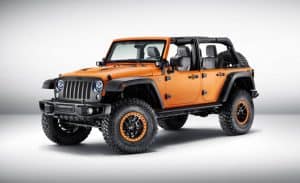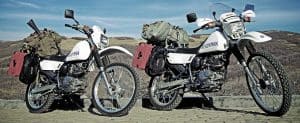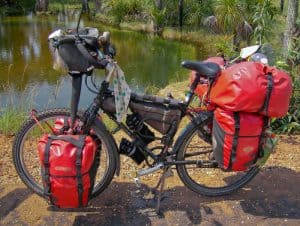Where and how to start your journey towards a more prepared house hold
I recommended Knowledge as one of the first things you should try and gain in part 1, now in part 7 we will look at another basic category of Items or Stuff I believe is needed for emergency preparations to keep yourself and family safe and secure and today that is your mode of reliable transportation.
Here in most parts of the United States vehicle ownership is the most common method of personal transportation. While in many of the major metropolitan areas alternatives like buses, commuter trains, taxis, Uber, Lyft and ferry’s are used by thousands every day, many will still own or maybe lease at least car, SUV or truck.
Reliable transportation can mean different things depending on its desired function. From your basic automobile that allows you or a family member to safely commute from home to work and back home again. Then again it might be a motorcycle or a bicycle you count on to move you from place to place. If you so desire and can afford you might be thinking it’s the extreme and ultimate EPM Proof Bug Out Truck you want parked in your driveway.
Let’s begin with the typical internal combustion engine powered car, truck or SUV. No matter whether you lease or own and no matter the age or mileage on your vehicles or the manufacturer, the basics of preventative maintenance apply and if you take care of the following you’ve done as much as practical to keep your vehicle dependable. All of this should be covered in detail in your owner’s manual as far as intervals and specifications.
If your new vehicle is still within its warranty period and coverage you will probably have the service department of the manufacturer maintain the service and repairs. Once you are out of warranty you will without a doubt save money by locating an independent mechanics operation for preventative maintenance and repairs. Ask co-workers, friends or neighbors for recommendations and then I recommend you check them out with the Better Business Bureau as well.
Regular oil and filter changes will add to the life and performance of your vehicle. While each manufacturer will have different recommendations for mileage intervals it is prudent to follow them when your vehicle has less than 100,000 miles. Once past that point we shortened ours from the recommended 5,000 mile interval to 3,000 just to add a little insurance. Oil and filters are cheap insurance and are the number one component for an engines operation. Currently my wife’s 1998 Expedition has 259,000 miles on it and my 2001 Expedition is showing 191,000 miles and both have been great vehicles. Oh and don’t forget to check the oil fill level at least every other fuel fill up because leaks do happen and running an engine with oil level on less than full is a sure way to shorten it’s life and worse case, destroy an engine.
Tires should be kept properly inflated and rotated on a mileage based schedule. This will help fuel mileage, improve the wear and help maximize the life of your tires. Be sure to shop around when it is time for replacements. On the last set of tires we purchased from a national dealer not only did we get a good price but they also included free rotation and front end alignments for the life of the tires.
Automatic transmission and drive axle lubrication replacement intervals are in your owner’s manual and should be followed as stated.
I check our vehicles belts and hoses at every oil change but that probably has to do with working as a mechanic in my early job years. They should be inspected at least twice a year for obvious leaks and wear by your mechanic.
Engine coolant and antifreeze should be checked when the oil and filter service is done. Minimum antifreeze protection will mostly depend on your area of operation and manufacturers requirements. The recommendations we followed at the nationwide trucking company I worked for was protection to a minimum of -25 degrees Fahrenheit year round and that is what we use for our vehicles.
Battery and charging system are probably best left up to your preferred mechanic shop primarily because special tools are needed to load test a battery and a voltmeter to monitor the output of your alternator, (or older vehicles generator). Other than that a visual inspection of the connections at the battery for corrosion and tightness should be done at each oil and filter change.
Most of the items above would apply if you have a motorcycle, snowmobile, ATV boat or aircraft, only differences I know of would be for schedule maintenance and inspection intervals and fluid recommendations and this to should be found in the owner’s manual.
Human power vehicles of various designs are out there and not just bicycles, we recently saw three people with recumbent tricycles at a state park and they looked quite comfortable. No doubt they could be trusted transportation and even capable of carrying a load of sorts a good distance. In most cases there preventative maintenance will be much simpler but is necessary none the less if they are to be relied on. Tires and moving parts require attention and proper lubrication for maximum life and performance.
It would be remiss of me if I did not include animal power such as horses, mules, donkeys and I guess maybe camels as reliable forms of transportation in many parts of the world. Their maintenance and upkeep to maintain reliability is beyond my scope of knowledge at present, but as far as horses go that may be a possibility in our not too distant future.
As always please add your thoughts, additional ideas and comments below.



Leave a Reply